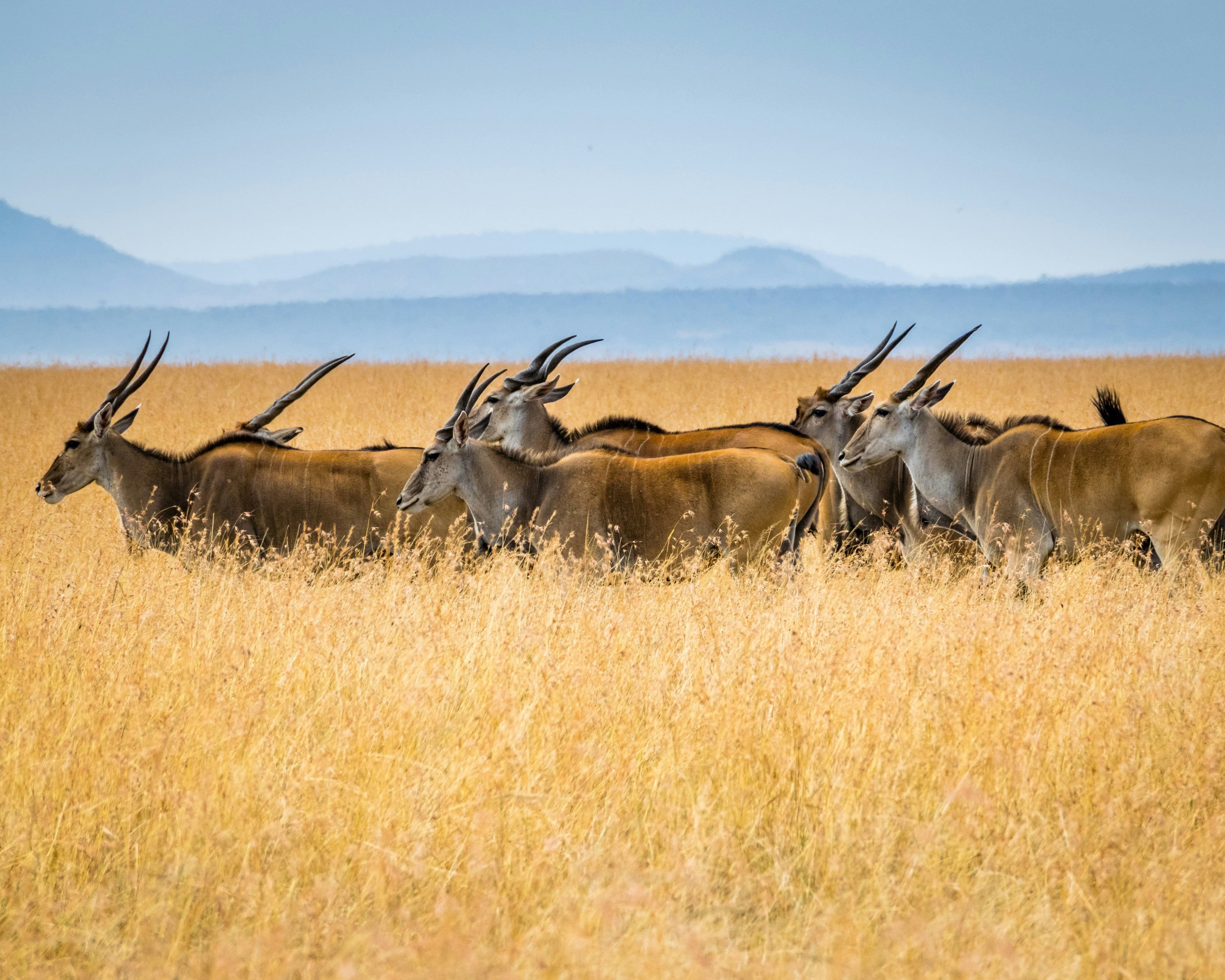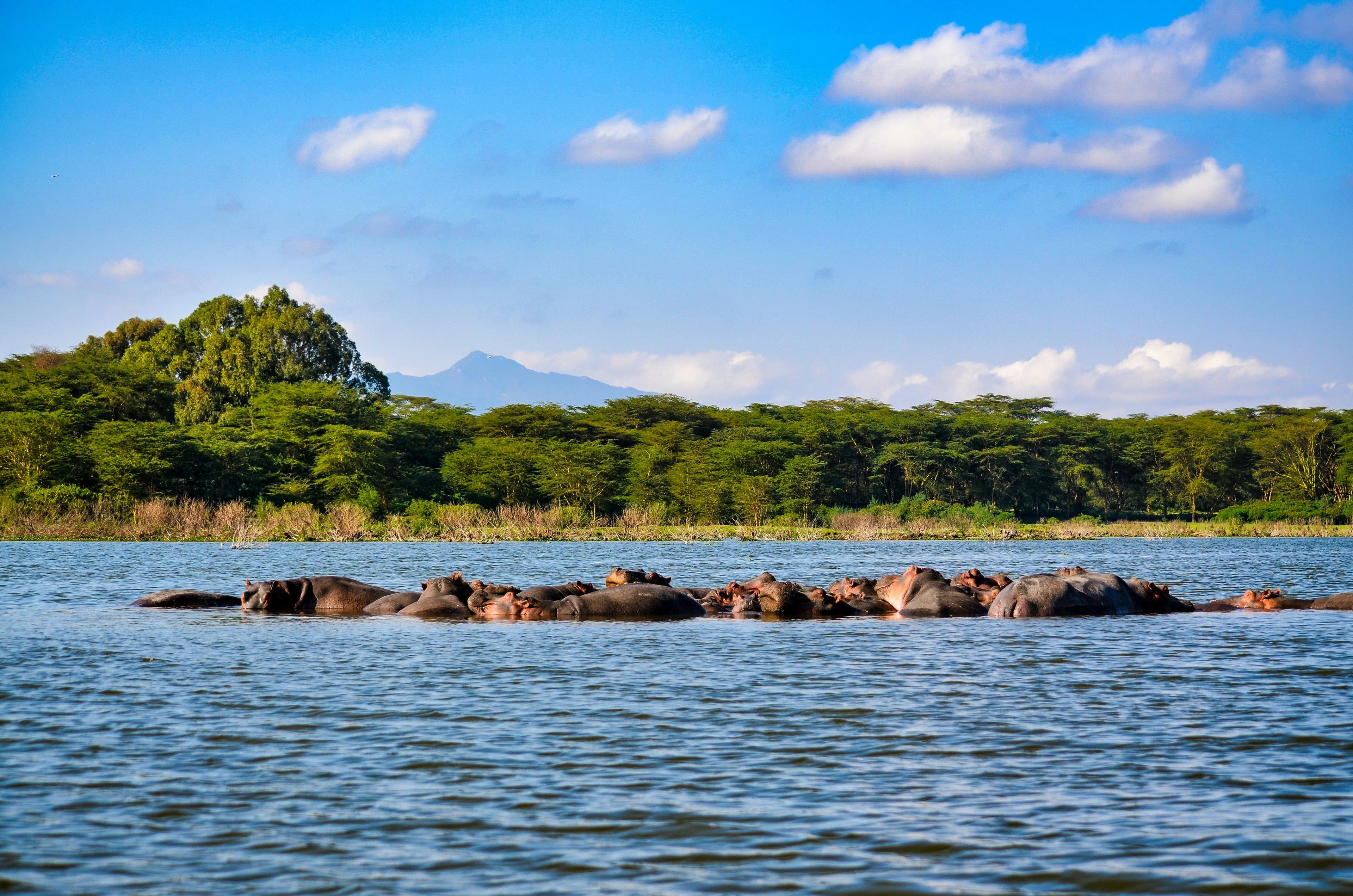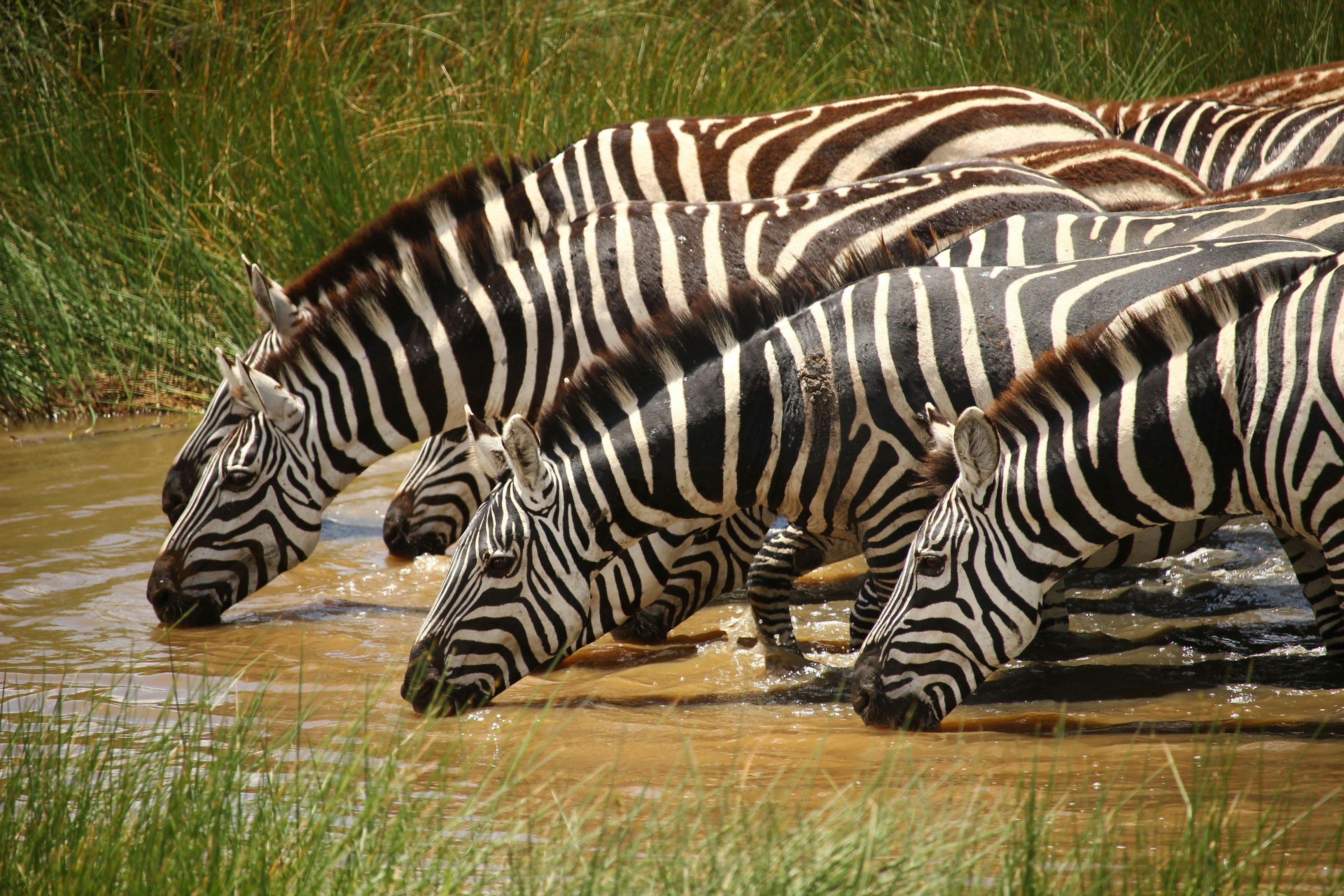Chasing the Great Migration
By Sandra Romano
May 23, 2025

Your Guide to the Best African Safaris for Witnessing Nature’s Greatest Show
Every year, one of the most extraordinary wildlife spectacles unfolds across the sweeping savannas of East Africa: the Great Migration. Over two million wildebeest, joined by hundreds of thousands of zebras, gazelles, and eland, embark on a perilous journey across Tanzania and Kenya in search of greener pastures. This awe-inspiring movement of life, death, and raw instinct draws travelers from all corners of the globe, and with good reason.
Witnessing the Great Migration is a bucket-list experience. But knowing when and where to go is crucial. The migration isn’t a one-time event, it’s a continuous, circular journey that follows the rains, and different regions offer unique, unforgettable encounters. Whether you’re a first-time safari-goer or a seasoned traveler, this guide breaks down your best options to catch the action throughout the year.
Witness New Life on the Serengeti: Calving Season (January–March)
Every year between January and March, the southern plains of Tanzania's Serengeti erupt with life. This is calving season, a breathtaking natural phenomenon where more than 400,000 wildebeest give birth over a few short weeks in the Ndutu region and the Ngorongoro Conservation Area. For safari travelers, this is one of the most rewarding, and dramatically underrated, times to visit.
Picture waking before dawn in a mobile tented camp, the air crisp and silent save for distant calls of jackals. As the sun rises, you drive across the open short-grass plains, where thousands of wildebeest and zebras dot the horizon. Every few minutes, you may witness a calf taking its first wobbly steps. And close behind? The predators.
Lions, cheetahs, hyenas, and jackals thrive during calving season, often lurking nearby. This is prime time for big cat sightings and dramatic hunting scenes. Cheetahs are particularly active in the Ndutu area, using low shrubs and termite mounds as cover to stalk young calves.
Despite the drama, the landscape is tranquil. The short grass provides wide visibility, making it ideal for photographers and first-time safari-goers. Plus, the crowds are far smaller than in peak migration months.
Where to Stay
Ndutu Safari Lodge – Affordable and well-positioned near Lake Ndutu, with a rich legacy of wildlife research.
Serengeti Safari Camp (Nomad Tanzania) – A mobile camp that tracks the migration.
Ubuntu Migration Camp (Asilia Africa) – Comfortable yet close to nature, great guiding teams.
Tour Operators to Consider
Tips for Calving Season
Visit mid to late February for peak birthing activity.
Bring a telephoto lens (300mm+) for photographing wildlife from a distance.
Combine with a visit to the Ngorongoro Crater for contrasting terrain and rhino sightings.
Be prepared for occasional rain showers, pack a waterproof jacket and dust protection for gear.
Calving season may not have the adrenaline of a Mara River crossing, but it offers unmatched intimacy with Africa’s wildlife in one of the most peaceful and magical windows of the migration. It’s new life, raw nature, and wild Africa, without the crowds.

April to May: The Lush Green Season in the Central Serengeti
As the long rains fall across the Serengeti in April and May, the landscape transforms. Dry savannah gives way to rolling green hills, wildflowers bloom, and golden light filters through passing storm clouds. It’s quieter now, many tourists steer clear due to the rains, but for in-the-know safari travelers, this is a hidden gem.
Centered around the Seronera Valley, this is the heart of the Serengeti ecosystem. Though the bulk of the migratory herds are slowly moving northwest, plenty remain scattered across the plains, offering easy sightings of wildebeest, zebra, giraffe, and elephant. More importantly, the predators stay put.
The big cats, leopards, lions, and cheetahs, are a major draw here. Leopards often drape themselves over the branches of sausage trees along the Seronera River, while lion prides lounge on the granite outcrops of Moru Kopjes, surveying the plains for stragglers. With the grass still low in many areas, visibility remains excellent, and the overcast skies make for rich, cinematic photography.
The birdlife is spectacular during this period. Migratory species mingle with residents like secretary birds, grey-crowned cranes, and Fischer’s lovebirds. For birders and photographers, this is one of the most rewarding times to visit.
Cultural Add-Ons
Though not directly inside the park, a trip to the Iraqw villages in Karatu or the Datoga blacksmiths near Lake Eyasi adds depth to your journey. These indigenous communities offer unique insight into Tanzania’s ethnic diversity and traditional ways of life. Consider combining your safari with a highland visit before flying to Seronera.
Where to Stay
Lemala Ewanjan Camp – Located in the central Serengeti, ideal for predator sightings.
Kubu Kubu Tented Lodge – Stylish, good for photography lovers.
Serengeti Serena Lodge – A more affordable, lodge-style option with solid access to Seronera.
Recommended Tour Operators
Tips for the Green Season
Expect light to moderate rains, especially in the afternoon, pack rain gear and protect your camera.
Game drives are less crowded, allowing for more intimate wildlife encounters.
Don’t miss the rock art at Moru Kopjes, a cultural relic of the Maasai.
Traveling during the green season offers solitude, drama, and a refreshing alternative to the more chaotic peak months. It's a time when the Serengeti feels like it's entirely yours.

June to July: River Crossings in the Western Serengeti
By June, the Great Migration herds have pushed into the Western Corridor of the Serengeti. Here, the landscape changes dramatically, flat plains give way to riverine forests, acacia woodlands, and the winding Grumeti River, which becomes the stage for the season’s first major crossings.
Unlike the chaos of the Mara River later in the year, the Grumeti crossings are quieter, more intimate, but no less thrilling. Towering crocodiles, some over 18 feet long, lie motionless beneath the water, waiting for the right moment. Wildebeest edge nervously at the riverbanks, testing the current. Then, in a sudden burst, hundreds charge across, often right into danger.
These months are ideal for those seeking both drama and tranquility. The Western Corridor sees far fewer tourists than the north, and the surrounding Singita Grumeti Reserve offers some of the most exclusive, conservation-driven safari experiences in Africa.
Beyond the river, expect large herds of buffalo, elephant, and giraffe, as well as lions and hyenas that trail the migration. The region’s woodland ecosystems also support rare black-and-white colobus monkeys, something you won’t find elsewhere in the Serengeti.
Cultural Encounters
A visit to the nearby Sukuma communities, Tanzania’s largest ethnic group, adds cultural richness. Learn about traditional dance, medicinal plants, and basket weaving in small villages around Mugumu. You can also visit Grumeti Fund’s community projects, supporting education and sustainable development.
Where to Stay
Singita Faru Faru Lodge – Top-tier, set along the Grumeti River with unbeatable guiding.
Mbalageti Tented Camp – Mid-range with panoramic views of the plains.
Grumeti Serengeti Tented Camp – Excellent access to the river, with a more classic bush feel.
Recommended Tour Operators
Tips for the Western Serengeti
Book early, June and July are increasingly popular, especially in private reserves.
A telephoto lens (400mm+) is ideal for capturing river crossings at a safe distance.
Grumeti is fly-in only, flights from Arusha or central Serengeti make logistics easy.
For those wanting migration drama without the northern crowds, this is the perfect sweet spot. You get the action of crossings, top-notch game viewing, and a chance to explore a more hidden side of the Serengeti.

August to October: Mara River Crossings in Northern Serengeti & Masai Mara
This is it, the most famous chapter of the Great Migration. Between August and October, over a million wildebeest, zebras, and gazelles surge across the Mara River, braving treacherous currents and formidable predators. Whether you’re on the Tanzanian or Kenyan side, this is a front-row seat to one of the world’s most spectacular wildlife dramas.
The crossings are chaotic and heart-pounding. Wildebeest gather in vast numbers at the riverbanks, grunting and hesitating as crocodiles lurk beneath the surface. Then, without warning, one animal jumps, and the rest follow in a frenzy of dust, hooves, and sheer survival. Not every crossing ends in tragedy, but many do, and that brutal realism is part of the raw power of the spectacle.
On the Tanzanian side, the Lamai Wedge and Kogatende offer fewer crowds and excellent guiding, while the Kenyan Masai Mara National Reserve and neighboring conservancies are more developed, with larger numbers of vehicles, but also higher chances of witnessing multiple crossings.
Beyond the crossings, this is prime time for predator action. Lion prides, cheetahs, hyenas, and even leopards stalk the herds. The ecosystem is rich, and game viewing is intense and constant.
Cultural Experiences
In Kenya, spend time with the Maasai people, whose communities border the Masai Mara. Many conservancies like Mara Naboisho and Olare Motorogi are co-managed with local Maasai, allowing for immersive village visits, traditional singing and dance, and even guided nature walks with Maasai warriors. On the Tanzanian side, cultural visits to Wasso or Waso Maasai villages near Loliondo can be arranged through community-focused lodges.
Where to Stay
Tanzania:
Nomad Lamai – Luxury camp near key crossing points.
Serengeti Bushtops – High-end tents with excellent river views.
Chaka Camp – A seasonal mobile camp close to the action.
Kenya:
Governors’ Camp – Classic, unfenced camp along the Mara River.
Angama Mara – Upscale lodge perched dramatically above the plains.
Kicheche Mara Camp – Intimate, in a private conservancy for fewer crowds.
Recommended Tour Operators
Tips for Mara Crossings
Stay at least 3–4 nights to increase your chances of witnessing a crossing.
Be patient, herds can linger for hours before jumping.
Private conservancies offer fewer vehicles and more flexibility for off-road viewing.
If you're chasing the most iconic scenes of the migration, this is your moment. The Mara is where nature puts on its most dramatic show, and you won’t forget it.

November to December: The Southern Return & Short Rains
As the short rains begin in November, the Great Migration turns south, completing its epic loop. The vast herds of wildebeest, zebras, and gazelles move out of the Mara and northern Serengeti, traveling steadily through central and eastern Serengeti toward the short-grass plains of Ndutu and the Ngorongoro Conservation Area, where fresh grazing awaits.
This transitional period is often overlooked, but it’s a secret treasure for safari lovers. The rains bring new life to the landscape: acacia trees bloom, the air smells earthy and clean, and migratory birds begin to arrive in brilliant plumage. You won’t get river crossings or newborn calves just yet, but you’ll have open landscapes, dramatic skies, and far fewer tourists.
The central Serengeti still teems with predators, lions follow the herds south, while leopards and cheetahs remain active around the Seronera River Valley. Wildebeest are constantly on the move, often in long single-file columns. The combination of light rains and lush scenery makes this an ideal time for photographers, as well as travelers looking to experience the Serengeti’s beauty without the mid-year crowds.
By December, many herds have reached Ndutu, where the calving season will soon begin. While not yet at full density, wildlife is abundant and easy to spot thanks to the open plains.
Cultural Encounters
Combine your Serengeti safari with a visit to Mto wa Mbu, a vibrant market town near Lake Manyara, known for its blend of over 100 ethnic groups. Sample local banana beer, ride a tuk-tuk through banana plantations, or take a guided village walk to learn about farming, cuisine, and Tanzanian daily life. Another excellent option is to explore Maasai communities near Ngorongoro Crater’s rim, many of which welcome visitors for cultural exchanges.
Where to Stay
Ndutu Safari Lodge – Comfortable and perfectly located for early herd sightings.
Lemala Ndutu Mobile Camp – Moves with the herds, ideal in late November and December.
Naabi Hill Camp – A good base in the southeastern Serengeti with great access to migration routes.
Recommended Tour Operators
Tips for November–December Travel
Expect intermittent rain, especially in the afternoon, pack accordingly.
Migratory birding is excellent, bring binoculars and a bird guide.
Combine with Ngorongoro Crater for rhino sightings and crater views.
This is the quiet epilogue of the Great Migration, a reflective, beautiful time where nature renews itself and the cycle begins again.
An Experience Worth the Journey
The Great Migration is more than just a spectacle, it's a story of survival, instinct, and the delicate balance of ecosystems. Whether you're watching a lioness stalk her prey on the Ndutu plains, gasping as wildebeest plunge into the Mara River, or quietly observing a cheetah family in the golden Serengeti light, you'll walk away changed.
No matter where or when you choose to go, witnessing the migration is an immersion into the rhythm of the wild, a reminder that nature, in all its chaos and beauty, continues its timeless march.